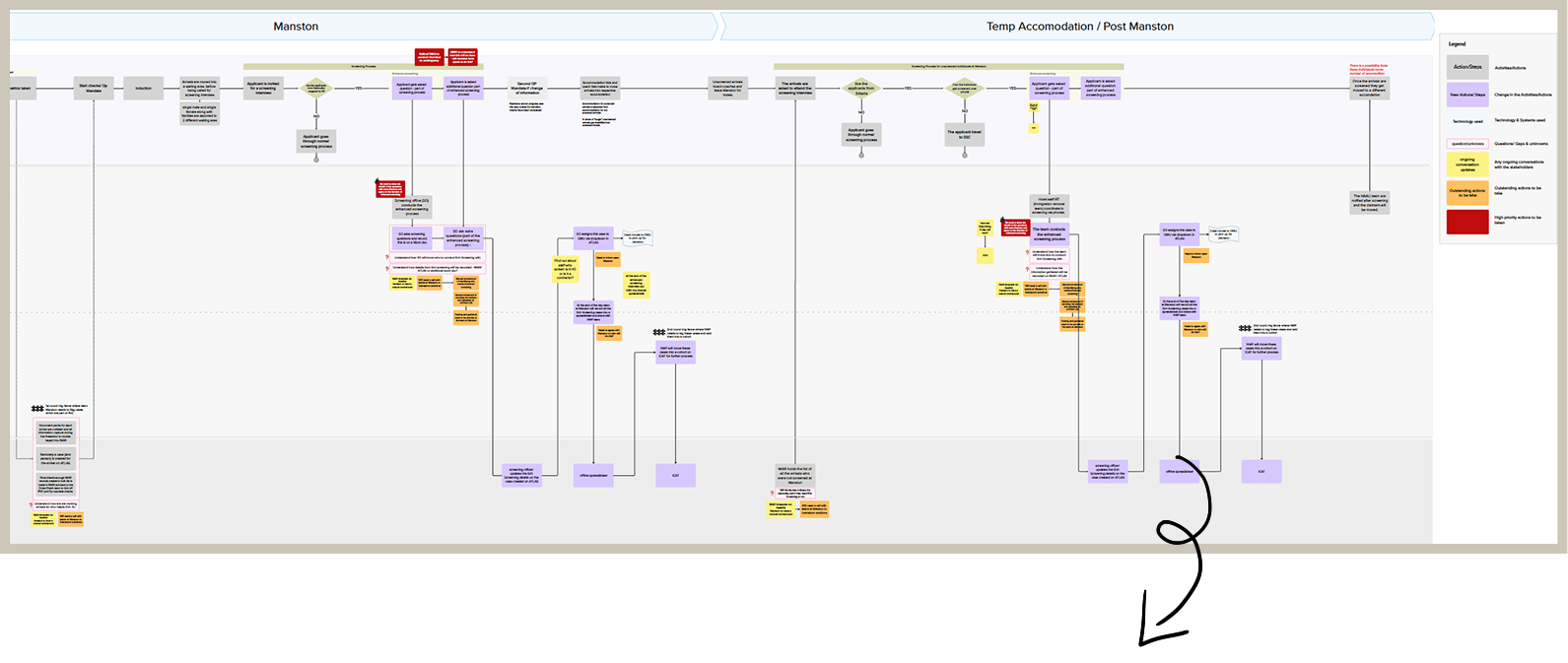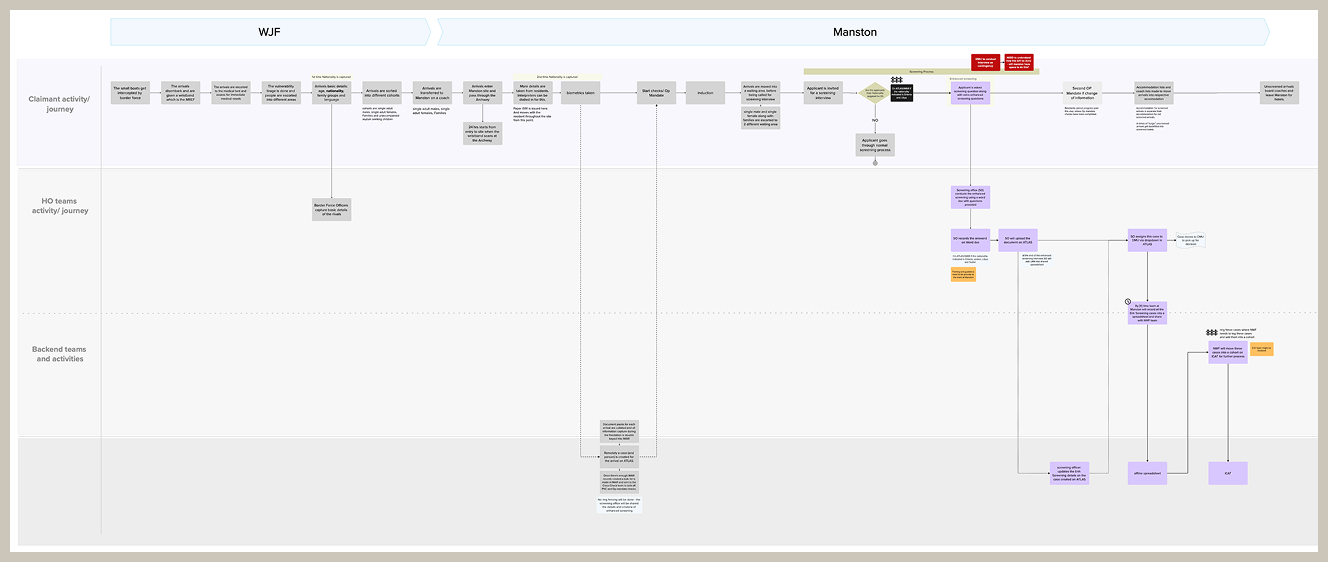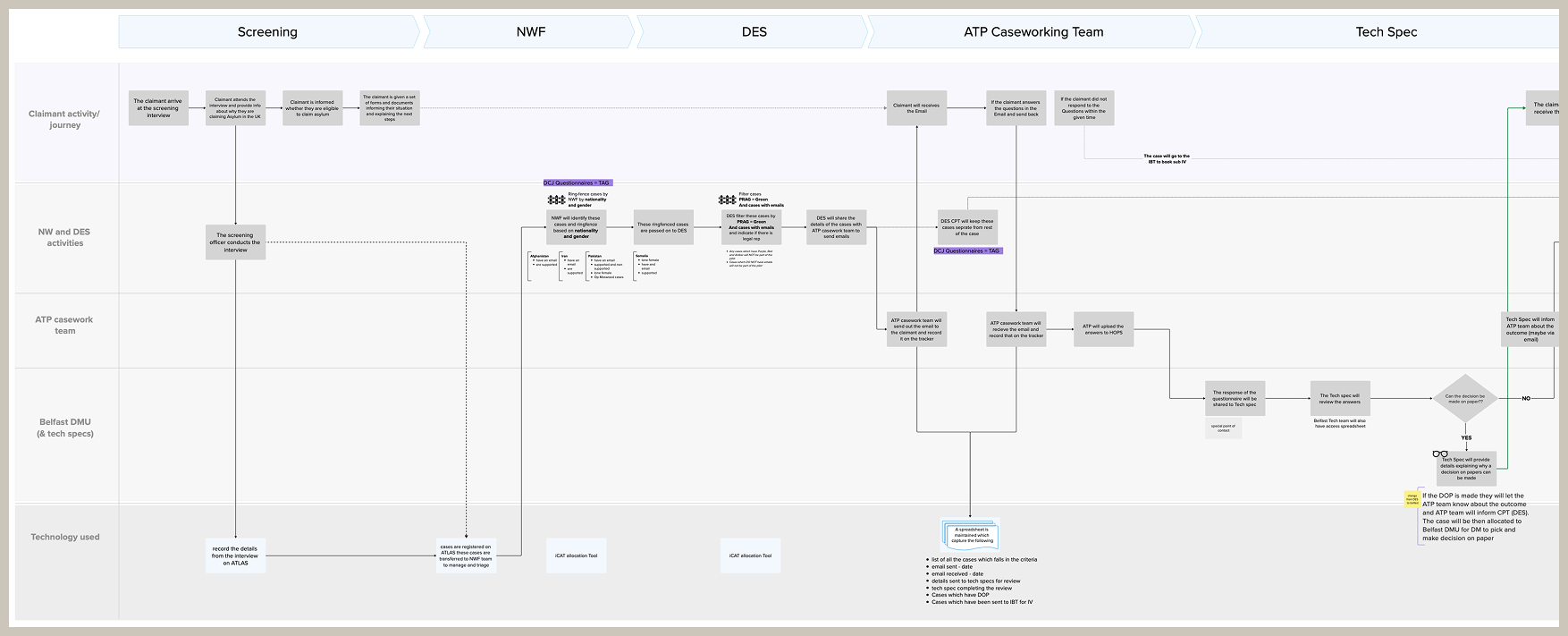01/ Summary
As part of the Home Office’s asylum transformation programme, I joined as a service designer during the discovery phase to help turn an existing strategy into a testable proof of concept (PoC). |
 |
The client already had a broad understanding of the challenge and a list of potential interventions to reduce long waiting times in asylum decisions.
Client details
|
Roles and responsibilities
|
Methods and tools
|
02/ Understanding the problem
The client understood the high-level problem (the delays within the asylum intake and decision-making process) and had already outlined potential interventions to address it. However, they lacked clarity on how these interventions connected and how to test their impact effectively.
Realignment workshop
The project began with a realignment session bringing together stakeholders, subject matter experts and delivery teams. This helped clarify objectives, rationalise overlapping interventions, and align everyone on a single shared vision.
New strategyWe discovered that multiple fragmented journeys could be merged into one unified journey with scenario-based branches based on claimant characteristics such as nationality or case type. |
 |

03/ Solution
GDS service design approach
Proof of concept
Guided by GDS principles, we developed a Proof of Concept to test new ways of managing cases and sharing information across different teams. This allowed us to experiment safely before committing to larger delivery phases.
Mapping the current state
I worked closely with the user researcher and SMEs and various teams involved to map the current end-to-end asylum intake process from the moment a claimant enters the system to when data is passed through multiple technologies and teams.
This mapping uncovered inefficiencies, manual handoffs, and technology dependencies that would later shape the proof of concept.
Designing the future state
Through an iterative process, I;
- created and validated the to-be process map for each intervention that visualised a reimagined end-to-end process.
- highlighted areas for discussion, surfaced knowns and unknowns, and prioritised topics for deeper exploration.


Collaboration
Working closely with policy, digital, and operations teams, I helped align the service vision with real user needs and technical feasibility. These discussions ensured that what we designed was both practical and desirable for those delivering and using the service.
Final Mapping
The final mapping visualised the to-be process for the proof of concept, showing the manual workarounds to replace out-of-scope technology changes. New steps each team needed to carry out during the PoC, and how interventions would be triggered based on claimant characteristics such as nationality or case type.


04/ Outcome
The engagement resulted in a clear, testable service strategy supported by tangible artefacts including as-is and to-be maps, and a KPI framework. The redesigned journey provided a single source of truth for all teams, while the manual workarounds allowed the pilot to proceed without major system changes.
This work enabled the Home Office team to move forward confidently with testing interventions, aligning stakeholders around a shared vision of success and measurable outcomes.
05/ Key learning
This project reinforced the value of early stakeholder realignment and the importance of designing pragmatic pilots in environments where change is constrained.
It also strengthened my experience in designing pilots for complex systems — balancing strategy, operations, and policy to make change happen in practical steps.